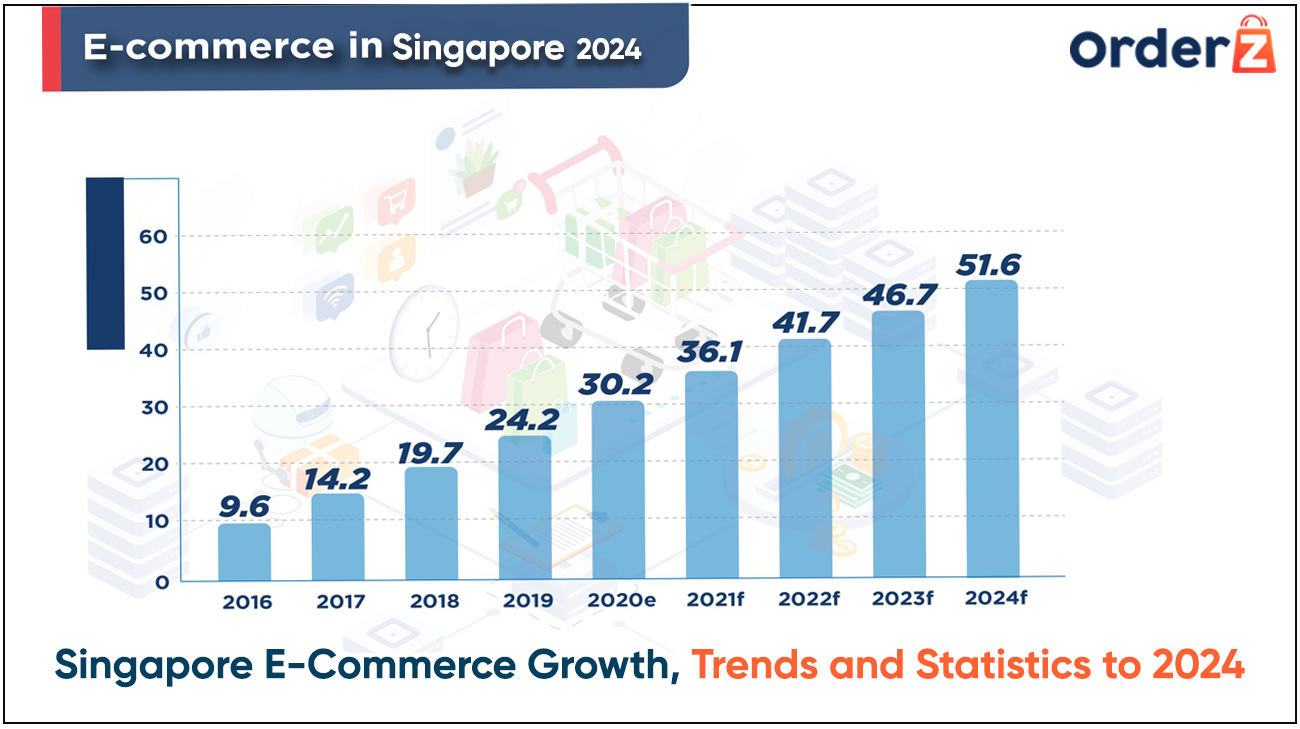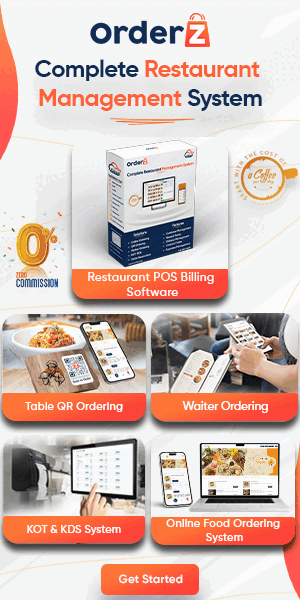Singapore is one of the most developed and affluent countries in the world, with a high internet penetration rate and a tech-savvy population. As a result, the Singaporean eCommerce market is growing rapidly and is expected to continue to grow in the coming years.
Singapore eCommerce Growth
The Singapore eCommerce market is expected to reach $5.84 billion in 2023 and grow at a CAGR of 11.7% to reach $9.09 billion by 2027. This growth is being driven by a number of factors, including:
Increasing internet penetration:
Singapore has an internet penetration rate of over 92%, one of the highest in the world. This means that more and more Singaporeans are able to shop online.
Growing middle class:
Singapore has a growing middle class with disposable income to spend on online shopping.
Convenience:
Online shopping is convenient and easy, especially for busy Singaporeans.
Variety:
Online shoppers have access to a wider variety of products and brands than they would in brick-and-mortar stores.
Singapore eCommerce Trends
Some of the key trends driving the growth of eCommerce in Singapore include:
Mobile commerce:

Mobile commerce is growing rapidly in Singapore, with over 70% of online purchases made on mobile devices.
Social commerce:

Social commerce is another growing trend, with many Singaporeans using social media platforms to discover and purchase products.
Live commerce:

Live commerce is a new and emerging trend in Singapore, where shoppers can watch live streams of products being demonstrated and then purchase them directly through the stream.
Cross-border commerce:

Cross-border commerce is also growing in Singapore, as Singaporeans become more comfortable shopping online from international retailers.
Singapore eCommerce Statistics
Here are some key statistics about the Singapore eCommerce market:
- E-commerce sales in Singapore are expected to reach $5.84 billion in 2023.
- The number of eCommerce users in Singapore is expected to reach 4.3 million by 2027.
- User penetration is expected to be 61.2% in 2023 and is expected to hit 70.2% by 2027.
- The average revenue per user (ARPU) is expected to amount to US$1.59k.
Singapore eCommerce Key players
The key players in the Singapore eCommerce market include:
eCommerce store builder:
OrderZ.Sg
OrderZ.SG is a relatively new player in the Singapore eCommerce market, but it is quickly gaining traction due to its ease of use and affordable pricing. It is a good choice for businesses that are just starting out with eCommerce, as well as for businesses that want to create a custom online store.
eCommerce marketplaces:
Lazada:

Lazada is the leading eCommerce platform in Singapore. It is owned by Alibaba Group and offers a wide range of products from a variety of sellers.
Shopee:

Shopee is another popular eCommerce platform in Singapore. It is owned by Sea Group and offers a variety of features, such as live commerce and social commerce.
Qoo10:

Qoo10 is a South Korean eCommerce platform that is also popular in Singapore. It offers a wide range of products from a variety of sellers, including many Korean brands.
Zalora:

Zalora is a fashion e-commerce platform that is popular in Singapore and other Southeast Asian countries. It offers a wide range of fashion products from a variety of brands.
RedMart:

RedMart is an online grocery platform that is owned by Lazada. It offers a wide range of groceries and other household products.
Amazon.sg:

Amazon Singapore is the local arm of the global e-commerce giant Amazon.com. It offers a wide range of products from a variety of sellers.
Carousell:

Carousell is a C2C marketplace that is popular in Singapore and other Southeast Asian countries. It allows users to buy and sell a wide range of products, from used clothing to electronics.
Foodpanda:

Foodpanda is an online food delivery platform that is popular in Singapore and other Southeast Asian countries. It allows users to order food from a variety of restaurants and have it delivered to their doorstep.
Popular product categories
The most popular product categories in Singapore eCommerce are:
Consumer electronics:
This category includes smartphones, laptops, TVs, and other electronic devices.
Fashion and beauty:
This category includes clothing, shoes, cosmetics, and other fashion and beauty products.
Toys, DIY, and hobbies:
This category includes toys, games, arts and crafts supplies, and other products for children and adults.
Personal care:
This category includes skincare products, hair care products, and other personal care products.
Home and living:
This category includes furniture, appliances, home décor, and other products for the home.
Other popular product categories in Singapore eCommerce include:
- Food and beverage
- Grocery
- Health and wellness
- Pet supplies
- Sports and Fitness
It is important to note that these are just general trends, and the specific products that are popular may vary depending on the time of year and other factors. For example, certain products, such as school supplies, tend to be more popular during the back-to-school season.
If you are considering selling online in Singapore, it is important to research the market and identify the product categories that are most in demand. You should also consider your own expertise and interests when choosing a product category to sell.
Singapore eCommerce payment methods in Singapore
The most popular payment methods in Singapore eCommerce are:
-
Credit cards:

Credit cards are the most popular payment method for eCommerce in Singapore. This is because they are convenient and offer a number of benefits, such as cashback and rewards programs.
-
Debit cards:

Debit cards are also a popular payment method for eCommerce in Singapore. They are a good option for consumers who want to avoid debt or who do not have a credit card.
-
Mobile wallets:

Mobile wallets are becoming increasingly popular in Singapore. They allow consumers to make payments using their smartphones without having to enter their credit or debit card information.
-
PayNow:

PayNow is a real-time payment platform that is operated by the Monetary Authority of Singapore. It allows consumers to make payments to other consumers and businesses using their mobile banking apps.
-
Other payment methods:

Other popular payment methods for eCommerce in Singapore include PayPal, GrabPay, and FavePay.
It is important to note that the popularity of different payment methods may vary depending on the product category and the target market. For example, credit cards are the most popular payment method for fashion and electronics products, while mobile wallets are more popular for food and beverage products.
Tips for growing up in Singapore
Business culture
- Be aware of the cultural differences between Singapore and your home country.
- Collaborate with local affiliate marketers to create messaging that is appropriate for the Singaporean market.
Ultra-fast internet

- Singapore has a high-speed internet infrastructure.
- Singaporeans have high disposable incomes and are comfortable spending them on online purchases.
Mobile-first strategy
- Mobile commerce is well-established in Singapore.
- Singapore has a high smartphone penetration rate and social media usage rate.
- Optimize your content and strategy for mobile devices.
Marketplace and platform eCommerce sites

- Online marketplaces and platforms like Lazada, Shopee, and Carousell are popular among Singaporean consumers.
- Consider using these platforms to reach Singaporean consumers.
In addition to these tips, here are some other things to keep in mind when expanding to Singapore:
Research the market.
What are the most popular products and services in Singapore? What are the demographics of the Singaporean population? What are the competitive landscape and regulatory environment like?
Localize your marketing and sales efforts.
This means translating your website and marketing materials into English and Chinese and using Singaporean cultural references. You should also optimize your website for search engines so that Singaporean consumers can easily find your business.
Offer competitive prices and shipping rates.
Singaporean consumers are price-conscious, so it is important to offer competitive prices and shipping rates. You may also want to consider offering free shipping on orders over a certain amount.
Provide excellent customer service.
This includes responding to customer inquiries promptly and resolving any issues quickly and efficiently.
Expanding to a new market can be a challenge, but it can also be a rewarding experience. By following the tips above, you can increase your chances of success when expanding your business to Singapore.
What’s next for Singapore’s growth?
Singapore is a small but vibrant economy that has grown rapidly in recent decades. The country has a strong focus on innovation and technology, and it is well-positioned for continued growth in the coming years.
Here are some key trends that are expected to drive Singapore’s growth in the coming years:
-
Digital economy:

Singapore is a leading hub for the digital economy, and this sector is expected to continue to grow rapidly in the coming years. The government is investing heavily in digital infrastructure and skills development, and it is also promoting the adoption of digital technologies across all sectors of the economy.
-
Green economy:

Singapore is also investing heavily in the green economy. The country has a goal of achieving net zero carbon emissions by 2050, and it is developing a number of initiatives to support this goal. These initiatives include investing in renewable energy, developing energy-efficient technologies, and promoting green transportation.
-
Knowledge economy:

Singapore is also investing in the knowledge economy. The government is investing in education and research, and it is also promoting the adoption of new technologies and business models. These initiatives are expected to help Singapore to maintain its competitive edge in the global economy.
In addition to these key trends, Singapore is also benefiting from a number of other factors, such as its strong financial sector, its strategic location, and its highly skilled workforce. These factors are expected to continue to support Singapore’s growth in the coming years.
However, Singapore also faces a number of challenges, such as an aging population, high cost of living, and rising competition from other countries in the region. The government is addressing these challenges through a number of initiatives, such as increasing the retirement age, providing subsidies for housing and healthcare, and investing in education and training.
Overall, Singapore is well-positioned for continued growth in the coming years. The country has a strong focus on innovation and technology, and it is benefiting from a number of key trends. However, the government will need to continue to address the challenges that the country faces in order to maintain its competitive edge in the global economy.
Conclusion
Singapore is a dynamic and growing eCommerce market, with a number of key trends driving its growth. Businesses that want to succeed in this market need to focus on providing a convenient and seamless shopping experience for their customers, investing in mobile commerce and social commerce, and offering competitive prices and shipping rates.
In addition to the factors mentioned above, the growth of eCommerce in Singapore is also being driven by a number of government initiatives. For example, the government has launched a number of programs to help small and medium-sized enterprises (SMEs) get online and sell their products and services online.
The future of eCommerce in Singapore is bright. With its high internet penetration, smartphone penetration, and disposable income, Singapore is well-positioned to continue to be a major eCommerce market in the years to come.
Additional tips for businesses expanding to Singapore:
- Partner with local logistics providers to ensure that your products are delivered to customers quickly and efficiently.
- Make it easy for customers to pay for their purchases by offering a variety of payment methods.
- Offer customer support in English and Chinese.
- Consider offering localized products and services.
By following these tips, you can increase your chances of success when expanding your eCommerce business to Singapore.






